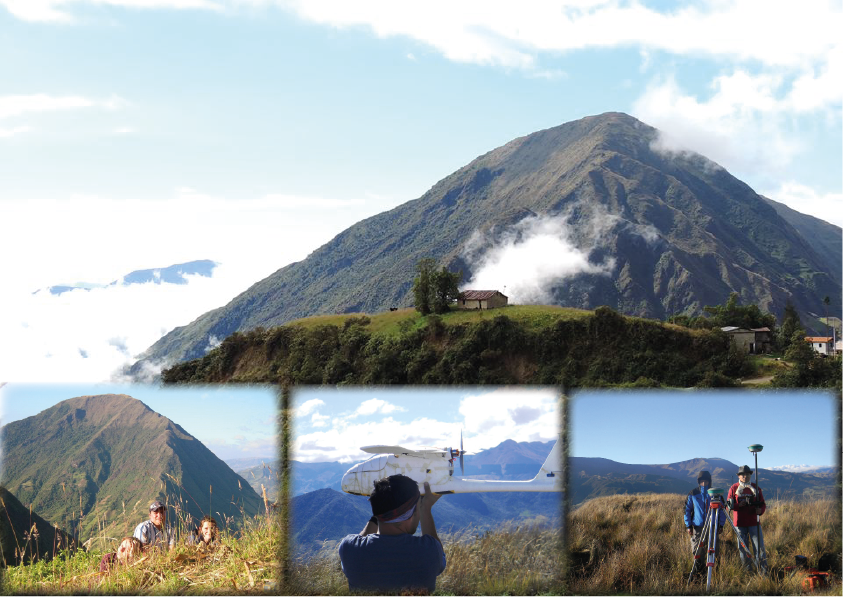Photo
PUKARÁ DEL PUÑAY: EL DESCUBRIMIENTO DE UNA PIRÁMIDE ESCALONADA PRECOLOMBINA EN LOS ANDES ECUATORIALES
This research focused on the archaeological study of a set of structural modifications built at the summit of Mount Puñay (3.275 m.s.n.m.), a site located in the western foothills of the central Andes of Ecuador. For this, it was considered a social theoretical framework based on "historical materialism" (Bate, 2001) and a methodological framework framed in the elements of "multidimensionality of the archaeological space" (Barceló, et al., 2004); This in order to understand the dynamic structure generated by the materiality of social actions that, over time, caused observable physical changes in the sedimentary matrix of Pukará del Puñay.
The objectives were: identification of surface structures through the use of geotechnologies (drones and geostationary station), identification of architectural typologies and cultural materials through archaeological excavations and determination of social occupations through radiocarbon dating. A total of 31 surface structures, 2 architectural typologies, 1 construction technique, 3 building cycles, 10 ceramic styles and 2 absolute chronologies were recorded.
All this allowed the discovery of an archaeological site with the greatest monumentality not only in Ecuador but worldwide, because its architectural features reveal a stepped pyramid of 584m long, 73m wide and 50m high, built from The 3,220 to the 3,270 msnm, in an area of 76.014,84 m² (7.6 has). In this way, it can be affirmed that the Pukaras, at least in the Central Andes of Ecuador, were architectures inherent to the technological production of pre-Inca societies like the Kañari Culture (816 +/- 30 AD and 1316 +/- 30 AD) and Not to Inca culture, as they had been linked in a long rhetorical tradition from Verneau and Rivet (1912) to Fresco (1990), stating that these sites were Inca military monuments built in the campaigns of their conquest in the Equatorial Andes.
ACADEMIC RESULTS OF THE PROJECT:
1. Research project of Engineer Christiam Aguirre in the Doctorate of Prehistoric Archeology at the Autonomous University of Barcelona. Archeobotanical Research Line of the Andean Prehistoric Agricultural Societies. April 2017 - April 2020
2. Research Project of Engineer Christiam Aguirre in the Master of Archeology of the Neotropics at the Polytechnic School of the Coast. "Archaeological study of the social occupations of the archaeological site of Mount Puñay". March 2015 - May 2016
3. Participation with a presentation by Eng. Christiam Aguirre at the "International Congress of Archeology". Barranquilla, Colombia. From the 10 to the 12 of May 2017.
4. Participation with a presentation by Eng. Carlos Jara at the "International Symposium on Applied Geomatics and Geospatial Solutions". Rosario - Argentina. From the 3 to the 7 of April 2017.
5. Participation with a presentation by Engineer Christiam Aguirre at the "International Meeting of Archeology of Ecuador". Quito, Ecuador. From the 26th to the 29th of November 2016.
6. Participation with a presentation by Eng. Christiam Aguirre at the "International Congress of Cultural Heritage in Ibero-America". Zacatecas - Mexico. From the 17th - 20th of November, 2015.
7. Investigative stay in the "Archaeological Museum of Royal Tombs of the Lord of Sipan", Lambayeque - Peru. From the 1st to the 30th of March 2015.
8. Publication of the book "Puñay, the Secret of a Pyramid". Volume I and Volume II
9. Publication of 7 scientific articles related to the research project
Files
No files to show



